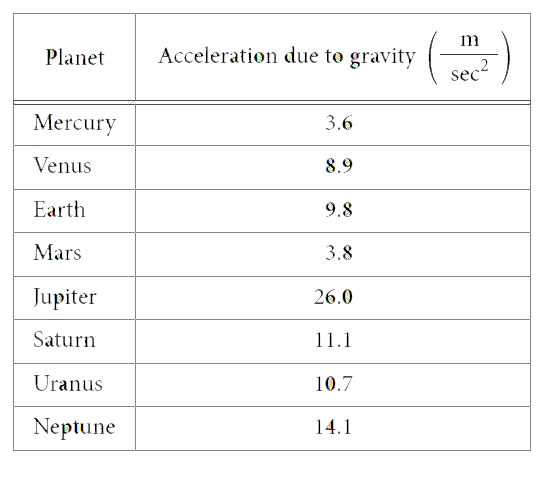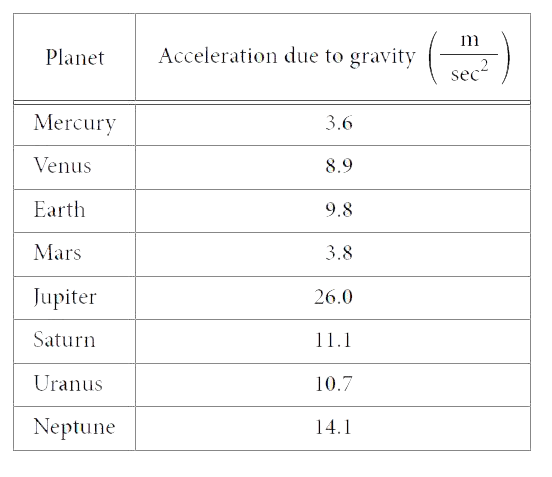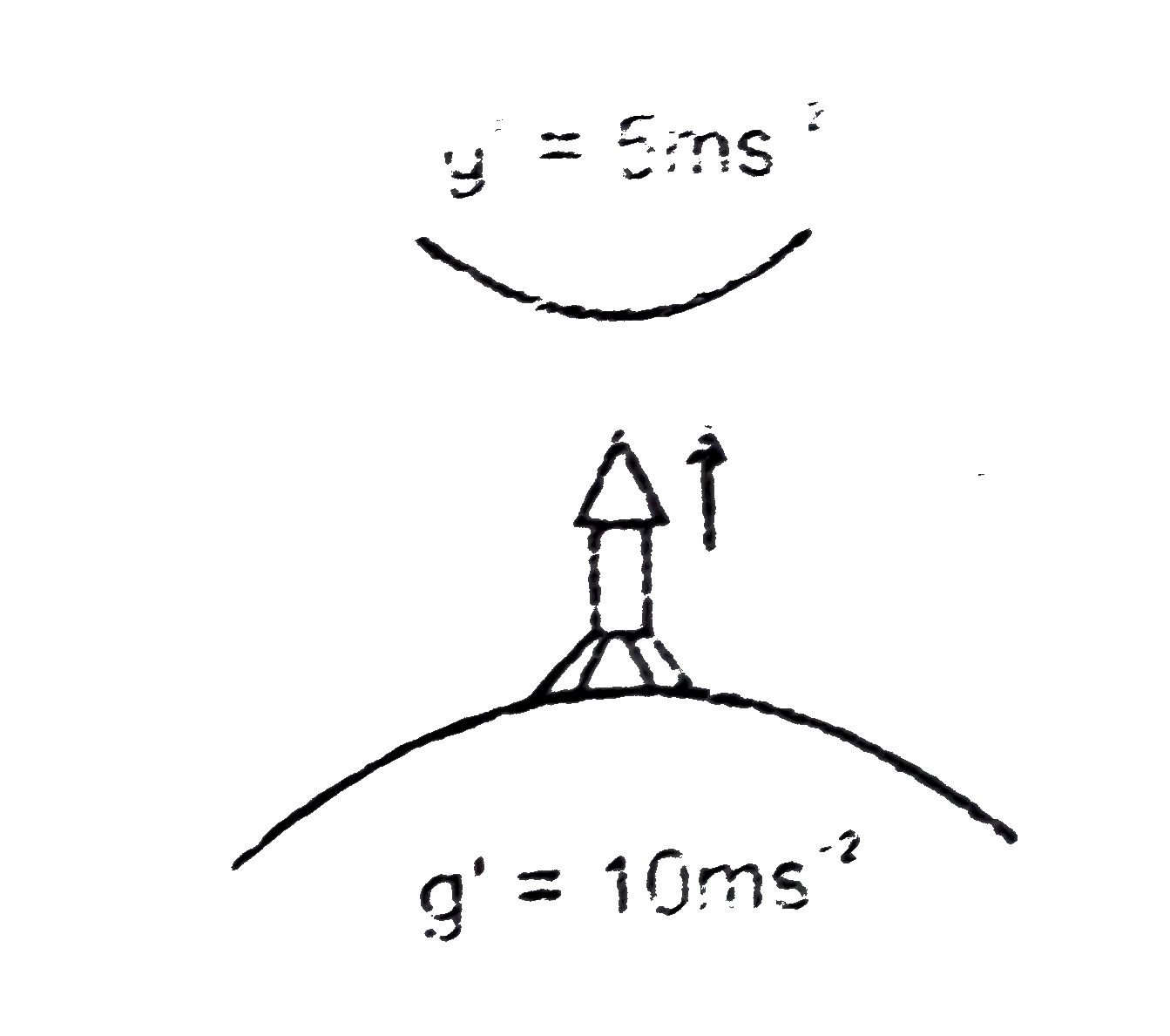In our solar system, the inter-planetery region has chunks of matter (much smaller in size compared to planets) called asteriods. They
will not move around the sun since they have very small masses compared to sun.
will move in an irregular way because of their small masses and will drift away into outer space.
will move around the sun in closed orbits but not obey Kepler's laws.
will move in orbits like planets and obey Kepler's laws.
The correct Answer is:D
To solve the question regarding the behavior of asteroids in our solar system, we can break down the information provided and analyze the options step by step.
1. Understanding Asteroids:
- Asteroids are small chunks of matter found in the interplanetary region of our solar system. They are significantly smaller in size compared to planets.
2. Mass and Gravitational Influence:
- Although asteroids have small masses compared to the Sun, they are still influenced by the Sun's gravitational pull. This means they do not simply drift away into space.
3. Kepler's Laws of Planetary Motion:
- Kepler's laws state that all celestial bodies, including asteroids, move in elliptical orbits around the Sun. These laws apply universally to all objects under the influence of gravity.
4. Movement of Asteroids:
- Asteroids do move in orbits around the Sun, similar to planets. Their paths can be affected by gravitational interactions with other celestial bodies, which can lead to deviations from their original orbits.
5. Evaluating the Options:
- Option A: "Will not move around the sun since they have very small masses" - This is incorrect because asteroids do move around the Sun.
- Option B: "Will move in an irregular way because of their small masses and will drift away into outer space" - This is also incorrect; while they can have irregular paths, they do not drift away into space due to their mass.
- Option C: "Will move around the sun in close orbit but they do not obey Kepler's law" - This is false as they do obey Kepler's laws.
- Option D: "Will move in orbits like planets and obey Kepler's law" - This is the correct statement.
6. Conclusion:
- The correct answer is Option D: "Will move in orbits like planets and obey Kepler's law."
- Asteroids are small chunks of matter found in the interplanetary region of our solar system. They are significantly smaller in size compared to planets.
- Although asteroids have small masses compared to the Sun, they are still influenced by the Sun's gravitational pull. This means they do not simply drift away into space.
- Kepler's laws state that all celestial bodies, including asteroids, move in elliptical orbits around the Sun. These laws apply universally to all objects under the influence of gravity.
- Asteroids do move in orbits around the Sun, similar to planets. Their paths can be affected by gravitational interactions with other celestial bodies, which can lead to deviations from their original orbits.
- Option A: "Will not move around the sun since they have very small masses" - This is incorrect because asteroids do move around the Sun.
- Option B: "Will move in an irregular way because of their small masses and will drift away into outer space" - This is also incorrect; while they can have irregular paths, they do not drift away into space due to their mass.
- Option C: "Will move around the sun in close orbit but they do not obey Kepler's law" - This is false as they do obey Kepler's laws.
- Option D: "Will move in orbits like planets and obey Kepler's law" - This is the correct statement.
- The correct answer is Option D: "Will move in orbits like planets and obey Kepler's law."
Topper's Solved these Questions
- BOOK - NCERT FINGERTPS ENGLISHCHAPTER - GRAVITATIONEXERCISE - Assertion & Reason Corner15videos
GRAVITATION
- BOOK - NCERT FINGERTPS ENGLISHCHAPTER - GRAVITATIONEXERCISE - Kepler Laws17videos
GRAVITATION
- BOOK - NCERT FINGERTPS ENGLISHCHAPTER - GRAVITATIONEXERCISE - HOTS10videos
GRAVITATION
- BOOK - NCERT FINGERTPS ENGLISHCHAPTER - KINETIC THEORYEXERCISE - Assertion And Reason10videos
KINETIC THEORY
Similar Questions
$ solar system has 15 planets.
! Earth is the major member of the solar systemView SolutionIn an imaginary planetary system, the central star has the same mass as our sun, but is much brighter so that only a planet twice the distance between the earth and the sun can support life. Assuming biological evolution ( including aging process etc.) on that is similar to ours, what would be the average life span of a 'human' on that planet in terms of its natural year? The average life span of a human on the earth may be taken to be 70 years.
View Solution
Knowledge Check
- Question 1 - Select One

The chart above shows approximate of the acceleration due to gravity in meters per second squared (msec2) for the eight planets in our solar system. The weight of an object on a given planet can be found by using the formula W=mg, where W is the weight of the object measured in newtons, m is the of the object measured in kilograms, and g is the acceleration due to gravity on the planet measured in msec2.
An object on Earth has a weight of 150 newtons. On which planet would the same object have an approximate weight of 170 newtons?AvenusBsaturnCuranusDneptune - Question 2 - Select One

The chart above shows approximate of the acceleration due to gravity in meters per second squared (msec2) for the eight planets in our solar system. The weight of an object on a given planet can be found by using the formula W=mg, where W is the weight of the object measured in newtons, m is the of the object measured in kilograms, and g is the acceleration due to gravity on the planet measured in msec2.
What is the weight, in newtons, of an object on Mercury with a mass of 90 kilograms?A25B86C101D324 - Question 3 - Select One
Tyndall effect is observed only when
(i) the diameter of the dispersed particles is not much smaller than the wavelength of the light used.
(ii) the refractive indices of dispersed phase and dispersion medium differ greatly in magnitude .
(iii) the size of the particles is generally between 10−11and10−9 m in diameter.
(iv) the dispersed phase and dispersion medium cna be seen separately in the system .A(i) and (iii)B(i) and (iv)C(ii) and (iii)D(i) and (ii)
If accleration due to gravity on the surface of earth is 10ms−2 and let acceleration due to gravitational acceleration at surface of another planet of our solar system be 5ms−2 An astronaut weighing 50kg on earth goes to this planet in spaceship with a constant velcity The weight of the astronaut with time of fiight is roughly given by
 .View Solution
.View SolutionA spherical capacitor has an inner sphere of radius 12 cm and an outer sphere of radius 13 cm. The outer sphere is earthed and the inner sphere is given a charge of 2.5μC. The space between the concentric spheres is filled with a liquid of dielectric constant 32.
(a) Determine the capacitance of the capacitor. (b) What is the potential of the inner sphere ?
(c) Compare the capacitance of this capacitor with that of an isolated sphere of radius 12 cm.Explain why the later is much smaller ?View SolutionLet a star be much brighter than our sun but its mass is same as that of sun If our earth has average lift span of man as 70years In the earth like planet of this star system having double the distance from our star find the average lift span of a man on this planet in terms of our year
 .View Solution
.View SolutionThe nearest star from our solar system is 4.29 light year away. How much is this distance in terms of par sec? How much parallax would this star (named Alpha Centauri) show when viewed from two locations of the earth six months apart in its orbit around the sun?
View SolutionIf one were to set out to form a nation based on democratic principles, thee would be essentially two paths to take: presidential or parliamentary. Both hold their own in terms of advantages and disadvatages, and both possess the endorsement of great prosperous nations. Parliamentary is the far more common order, but many attribute its prevalence to the legacy of the british empire rather than to its superiority. The disparity between the two is hardly subtle. In a presidential system, the executive and legislative branches of government are completely independent of one another such as in the united states of America. The president, elected directly by the people, is a national figure that is at once the head of government and state, but is separate and distinct from congress, the lawmaking body. One the other hand,a parliamentary system is a fusion of executive and legislative powers with the executive most often called prime minister, being a member of parliament . In the latter arrangement members of parliament, the legislative assembly, are elected by the people but then choose amongst themselves the most fit to be executive. Most often, a monarch, like in Great britain, is given the ressponsibility of head ing the state and being the icon of national ceremony. Other divergence occurs in the term limits and standards of accountablitiy in which the executive is held to . For instance, the presidential model allows for fixed terms and scheduled elections. As such the president enjoys the assurance of a secure term in which he or she can work to establish and meet goals for the nation's advance. Only in situations where th epresident ins found guilty of serious crimes will he or she be removed from office before the end of the term conversely, the prime minister is subject to much more scrutny and job insecurity. Legislatures within this model of government are expected to question the prime minister directly on a weely basis and are able to remove the executive any time confidence is lost in his or her ability. character, or judgment. Hence parliamentary systems are subject to random elections that can more easliy replae an unfit leader. Advocates of the presidential model posit that tit sis more democratic because the people themselves choose their executive. They contend that the fixed terms even allow for some stability thath parliamentary organization does not allow. Likewise, a further benefit lies in the separation of powers subject to checks and baances, in which the executive and legislative bodies are able to monitor one another and assure that power is not centralized. yet, critics of the system allow that the president's national status affords tendencies toward authoritarianism. futhermore, as a rule, deadlocks or stalemates are much more common within a system that often has executive and legislative bodies under the control of different parties. cynics therefore suggest that the presidential model is privy to discord and inefficieny not to mention, presdents are difficult to remove when thought to be unfit. Those in favor of the parliamentary model belive that the fused government allows for unity and harmony that is all but alien whithin the former. Not only is it faster and easier to pass legislation, but more often than not, the government operates more cooperatively. Since it is very unlikely that the ruling party will choose a prime minister from another party, the executive and legislative bodies are almost always working in accord. Moreover, when a prime minister is decided unfit, he or she can be removed and replaced right away. This system, they argue, is much more efficient and less prone to curruption. yet, not everyone agrees. Whith the legislature holding supreme power Crities contend that ' tyranny of the majority is all too likely. Not only are the people not directly electing their leader, legislation passsed by parliament. The minority parties have virtually no say and the rulling party of the assembly can easliy manipulate when the prime minister will be replaced and when electins will be held. The two systes represent very different approaches to democracy, and as such, operate so One must condider both democratic ideals and effectiveness in deciding the best way to select a leader. Wheile presidential elections can become feeble popularity contests, centralized power is a real concern.
(Q) 14. Which option gives the best evidence for the answer the previous question?View Solution

